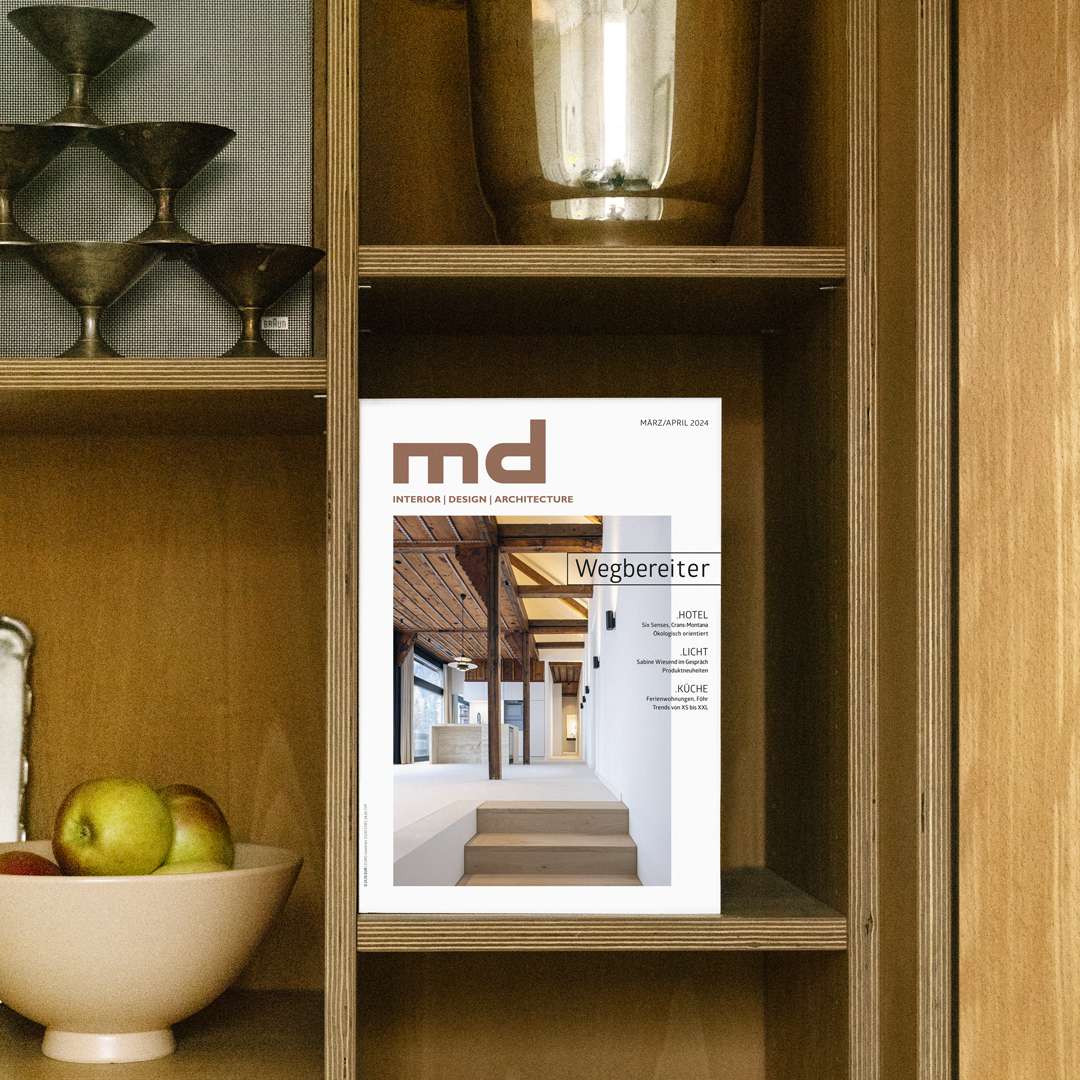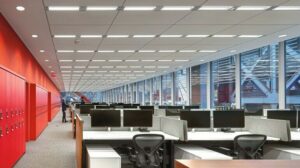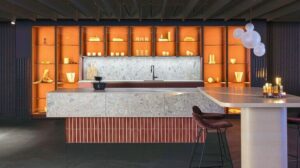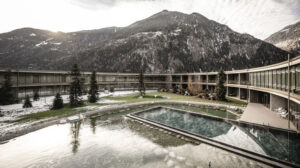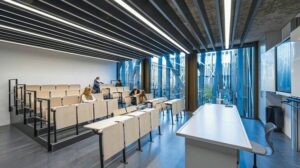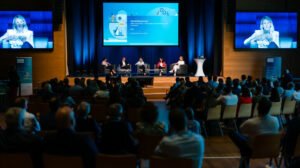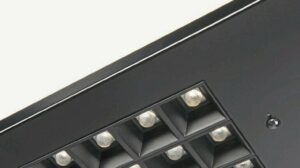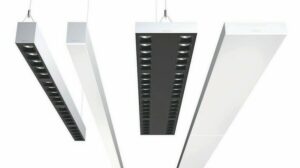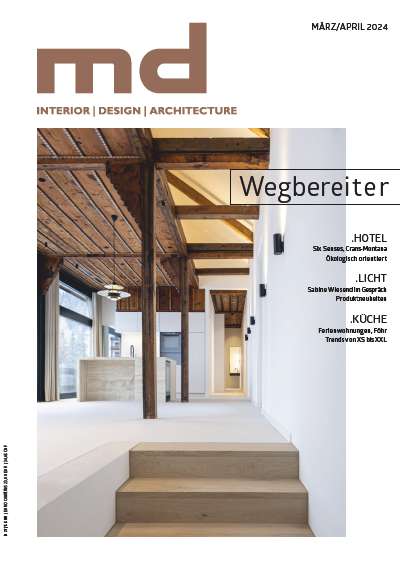Mit ‚Symbioz‘ entwirft Renault eine Vision für das Jahr 2030. Privathaus und Auto tauschen nicht nur Daten oder speisen gegenseitig ihre Batteriespeicher – so weit, so vertraut. Zukunftsmusik ist, dass ein – zumindest vom rein elektrischen Antrieb her – „sauberes“ Auto zum festen Bestandteil der wohnlichen Szenerie wird und inmitten des Hauses als autonomes Familienmitglied Aufnahme findet. Es soll sich ebenso selbstverständlich im Wohnzimmer wie auf der Terrasse mit Fernblick aufhalten, wie heute schon Hund oder Katze. Mit der Länge von 4,70 und einer Breite von fast zwei Metern hat der Renault Simbioz Abmessungen einer Luxuslimousine, die Höhe von 1,35 Meter entspricht einem Sportwagen.
Dass vier Passagiere vergleichsweise bequem einsteigen, ermöglicht das seitlich nach oben schwingende Glasdach. Wie bei einem Möbel öffnen sich zudem die vorn und hinten angeschlagenen Türen. Abgesehen von der breiten Öffnung, erleichtern drehbare Sessel den Einstieg. Der Niederländer Laurens van den Acker ist seit 2009 Chefdesigner von Renault, zuvor sorgte er bei Mazda mit einer von der Natur inspirierten fließenden Formensprache für Aufsehen. In seiner Präsentation zitiert er Raymond Loewy: „The most beautiful line is the line of a rising sales chart “ – und zeigt sogleich Charts, in denen Verkäufe, Marktanteile und Wertschätzung der Kunden für Renault-Design steil nach oben zeigen. Mit weltweit 5,268 Millionen verkauften Autos im ersten Halbjahr 2017 rückte Renault-Nissan dank der zuletzt erfolgten Integration von Mitsubishi Motors erstmals zum weltweit größten Autohersteller auf – vor Volkswagen und Toyota. „Jetzt hat sich unsere Gestaltung auf der Straße etabliert und wir können konzeptioneller nachdenken“, sagt Laurens van den Acker. „Es ist nicht der Stil, den wir herausarbeiten müssen, es geht jetzt eher um Innovation und neue Konzepte.“
Nicht alles, was gestalterisch heute schon gut gemacht ist, entspricht gesetzlichen Abgasstandards. Beim Diesel halten viele Hersteller aktuelle Stickoxid-Grenzwerte nur unter sehr speziellen Umständen auf Prüfständen ein, nicht aber unter alltagsnahen Fahrbedingungen. Tatsache ist, dass beliebte Renault-Modelle wie Captur oder Talisman in Sachen Stickoxid bei Tests unter realen Bedingungen besonders schlecht abschnitten. Tatsache ist aber auch, dass Renault heute mit dem Zoé jenes alltagstaugliche und emissionsfreie Elektroauto im Programm hat, das in Europa am meisten verkauft wird. Zurück in die Zukunft: Das junge Team visionärer Gestalter um van den Acker wünscht sich ‚Symbioz‘ als Rückzugs- und Aussichtszone oder als abgeschlossene Kapsel für konzentriertes Arbeiten, inmitten einer weitgehend entgrenzten Raumfolge. Das Fahrzeug dient nicht mehr ausschließlich der vorwärts drängenden konzentrierten Fortbewegung. In einem Aufzug im Zentrum des Wohnhauses kann es die Etage wechseln und auf die Terrasse gleiten. Dort ersetzt es zugleich Geländer und Sonnenliege, wird gleichermaßen zum mobilen Aussichtspunkt und zur Entspannungszone.
Grundlegend ist sein wohliges helles Interieur, mit Elementen aus Holz, weißem Marmor, Porzellan, Baumwolle und Filz, die im Auto heute nicht in dieser Kombination und Verarbeitung anzutreffen sind. Fährt man Steuerelement sowie den breiten, auf den Fahrer orientierten Bildschirm zurück, dann lassen sich die vorderen Sessel herumdrehen, was auch während der Fahrt das Sitzen in einem diskursiven Viererabteil ermöglicht.
Dies bot – allerdings nur im geparkten Zustand – bereits die Konferenz-Anordnung der Sitze beim ersten Renault ‚Espace‘ von 1984. Im Concept Car ‚Symbioz‘ hält man sich in einer flachen, langgestreckten Kabine auf, überdacht von einem transparenten Himmel aus Glas und Polycarbonat, was an amerikanische Show Cars der Fünfzigerjahre erinnert. Dass die Form des Autos architektonische Bezüge aufweist, ist kein Zufall.
Wie das Auto hat sich auch das Haus gewandelt, ist zur „Ruine“ geworden, wie Vilém Flusser 1991 schrieb, „durch deren Risse der Wind der Kommunikation bläst.“ Der Medienphilosoph propagierte daher ein neues Bauen, das „wie eine Krümmung im zwischenmenschlichen Feld“ zu gestalten sei „wohin Beziehungen ‚angezogen’ werden“. Konkret ergänzt Renault seine Fahrzeugstudie ‚Symbioz‘, die den Projektnamen ‚Z33‘ trägt mit dem Konzepthaus ‚H33‘. Renault bat zwei Pariser Architekturbüros um Ideen, wie ein ansehnliches Haus in einer messtauglichen Weise konstruiert werden kann, das aktuellen ästhetischen Bedürfnissen gerecht wird. Lisa Ghotmeth (bis vor kurzem DGT Architects) und Marchi Architectes beteiligten sich. Den Zuschlag bekam das 2004 von Adélaïde und Nicola Marchi gegründete Büro Marchi Architectes. Auf Seiten von Renault koordinierte die deutsche Architektin Tina Kentner das Projekt. Sie ist seit zehn Jahren als Markenexpertin für den französischen Automobilhersteller tätig.
Mobile Wohnlandschaft
Bekannt wurde Marchi Architectes hauptsächlich für kleine und große Häuser aus Holz und Beton, für ihre minimalistisch gestalteten Fluchtorte in der Landschaft und für durchdacht ausgebaute Stadtapartments. Das Konzepthaus ‚H33‘ könnte eines dieser offenen Verstecke auf dem Lande sein. Das langgestreckte Gebäude ist im Erdgeschoss überwiegend verglast. Seine Macherinnen und Macher sehen es in der Tradition der ersten vorfabrizierten Wohngebäude, die wiederum von Fahrzeugkonstruktionen der Zwanziger- und Dreißigerjahre beeinflusst waren.
Das Gebäude kommt ohne innere Stützen oder Mauern aus, was es Besuchern und dem Concept Car erleichtert, sich darin zu bewegen. Im Innern entsteht durch Dekorelemente aus Holz ein wohnlicher Gesamteindruck. Statt den Raum mit langweiligen Designklassikern auszustatten, lud Renault eine Reihe junger französischer Gestalter wie Ionna Vautrin, Jean-Louis Iratzoki und Cléo Joffre ein, Möbel und Ausstattungsdetails zu liefern. Schon dies ist beispielhaft und dürfte gern auch östlich des Rheins Schule machen. Eine technisch wie auch gestalterisch anspruchsvolle Besonderheit ist die speziell gefertigte drehbare Aufzugsbühne, die an vier Kabeln das Auto vom Erdgeschoss auf die obere Ebene hebt, von wo aus es auf die Dachterrasse rollt. Inspiriert vom ästhetischen Vorbild des offenen Aufzugs im ‚Bordeaux House‘ von Rem Koolhaas, nimmt die minimalistische Plattform technisch Anleihen bei der Bühnentakelage.
Sie führt ins zylinderförmig aufgesetzte Obergeschoss, das außen mit kupferfarbenem Lochblech verkleidet ist. Für die Außenwirkung des Zylinders hat Philips Lighting ein spezielles LED-Lichtszenario geschaffen. Es hebt die Stadien der Kommunikation zwischen Haus und Auto jeweils hervor. Annäherung des Autos ans Haus, Aufladen sowie den Standby-mode. Das Licht kann mittels der Bordelektronik vom Auto aus fernbedient werden. In Partnerschaft mit Renault brachte das Designteam von Philips Lighting seine Erfahrung in Sachen Programmierung, Smart Light und Internet of Things (IoT) ins Projekt ein. Kaum eine Branche ist so auf den Absatz gegenwärtiger Produkte orientiert wie die Autoindustrie und zugleich zelebriert sie wie keine andere auf ihren Messen eine stets zum Greifen nahe, aber doch unerreichbare Zukunft. Weshalb kehrt nun die Ästhetik der Dream Cars wieder? Laurens van den Acker hat eine Erklärung dafür. „Nach den Krisen der letzten Jahre gibt es heute eine sehr schnelle technologische Entwicklung. Die Autoindustrie nimmt mit dem autonomen Fahren und mit der Konnektivität daran Anteil. Deshalb sehen wir Konzepte, die zeigen, dass wir träumen können.“ Allzu wörtlich muss man Träume nicht nehmen. Mitunter reicht es, sich an ihnen zu erfreuen.
Weitere Projekte finden Sie hier
Renault Concept Car and House
In your car at home
With ‘Symbioz’, Renault has designed a dream scenario for the year 2030. Not only do home and car exchange data or power each other‘s energy storage batteries – that‘s nothing new for us. What does seem a long way off is that a “clean” car, clean at least due to its purely electric drive, becomes part and parcel of the home setting and is welcomed to the bosom of the home as a free and independent member of the family. The car should be just as at home in the living room as it is on the patio with its impressive vistas, like cats and dogs already are today. With its length of 4.7 meters and width of nigh on two meters, the Renault ‘Symbioz’ has the size of a limo, and its height of 1.35 meters is the same as that of a sports car.
The gullwing glass roof allows four passengers to board the vehicle in relative comfort. In addition, the doors hinged at front and rear open as on a piece of furniture. Apart from the wide door opening, swiveling armchairs make it easier for passengers to board the vehicle. Dutchman Laurens van den Acker has been Renault‘s Chief Designer since 2009. He previously caused quite a sensation at Mazda with his fluent language of form inspired by nature. He quotes Raymond Loewy in his presentation:“the most beautiful line is the line of a rising sales chart” – and, saying this, he presents us with charts on which sales figures, shares of the market and customer regard for Renault-Design skyrocket. With 5.268 million cars sold worldwide in the first six months of 2017, Renault-Nissan has moved into position for the first time as the biggest carmaker worldwide, – taking the lead over Volkswagen and Toyota, thanks to the recent integration of Mitsubishi Motors. Laurens van den Acker goes on to say: “our design has now become established on the road, and we can afford to think further outside the box concept-wise. We don‘t need to flesh out the style. What we now need to do is tackle innovation and new concepts.”
Not everything that is already well designed today complies with emission-standards legislation. On diesel vehicles, many manufacturers comply with current NOx limits only under very specific conditions on dynamometer test beds, but not under everyday driving conditions approximating those in practice. It is a fact that popular Renault models such as the Captur or Talisman did particularly badly as regards NOx under real conditions. But it is also a fact that today‘s Renault range includes the best-selling car in Europe among zero-emission electric cars suitable for everyday use: the Zoé. Back to the future: the young team of visionary designers headed up by van den Acker wants ‘Symbioz’ to be a zone of retreat and outlook platform or a secluded capsule for focused working in the middle of a sequential spatial arrangement largely free of boundaries. The vehicle is no longer used solely for intense forward locomotion. It can switch floors in an elevator at the center of the house and glide onto the patio. When on the patio, it takes the place of both railing and sun lounger and turns into both a mobile lookout point and a chill-out zone. Its comforting, bright interior, with elements made of wood, white marble, porcelain, cotton and felt, which you don‘t come across in this combination and with this level of craftsmanship in today‘s cars, is pivotal. If you move the control element and the monitor facing the driver out of the way, the front armchairs can be swiveled round, which allows the occupants to sit as if they were in a train compartment for four even when on the move, a Renault-Design feature conducive to logical, topic-by-topic discussion. This was already offered by the conference arrangement of the seats on the first Renault ‘Espace’ dating from 1984, but only with the vehicle parked. In the ‘Symbioz’ Concept Car, you are in a shallow, elongated passenger compartment, roofed over by a transparent roofliner made of glass and polycarbonate and reminiscent of American Dream Cars of the fifties. It is not pure chance that the shape of the car has links to architecture. Just like the car, the house has also transformed itself and has become a “ruin”, as Vilém Flusser wrote in 1991, “through whose cracks the wind of communication blows.” The media philosopher consequently preached a new type of building process which must be designed “like a warp in the interpersonal field to which relationships are ‘attracted’.” Specifically, Renault has complemented its ‘Symbioz‘ vehicle study which bears the project name ‘Z23’ with the ‘H33’ Concept House. Renault asked two firms of architectural consultants in Paris for their ideas as to how to design an appealing house meeting current esthetic requirements and in a way which would allow it to be gauged. Lisa Ghotmeth (until recently DGT Architects) and Marchi Architectes took up the challenge.
Mobile Livingscape
The bid of the Marchi Architectes firm of architectural consultants founded in 2004 by Adélaïde and Nicola Marchi was the winner. The German architect Tina Kentner coordinated the project for Renault. She has been working as branding expert for the French carmaker for ten years now.
The Marchi Architectes firm of architectural consultants gained fame chiefly through timber and concrete houses, both large and small, through the firm‘s minimalist-design country escapes and through its town and city apartments extended in a well-thought-out way. Concept House ‘H33’ could be one of these open country hideouts. The elongated building is mainly glazed on the first floor. Its makers see it in the tradition of the first prefabricated residential buildings which, in turn, were influenced by vehicle designs of the twenties and thirties. The building does without internal supports and masonry walls, which makes it easier for visitors and Concept Car to move around inside. Wood decor elements in the interior create a homely overall impression. Instead of furnishing the space with humdrum design classics, Renault invited a number of young French designers such as Ionna Vautrin, Jean-Louis Iratzoki and Cléo Joffre to come up with furniture and design details. Even this is commendable and ought to set a precedent on the German side of the River Rhine as well. One special feature which is sophisticated both technically and design-wise is the specially manufactured, revolving elevator platform which lifts the car on four cables from the first floor onto the upper level, from where it moves onto the roof deck. Inspired by the esthetic example of the open elevator in the ‘Bordeaux House’ of architect Rem Koolhaas, the minimalist-design platform borrows technically from stage rigging. It leads to the top floor which has been added on in the manner of a cylinder, with external copper-colored perforated-sheet cladding. Philips Lighting created a special LED lighting scenario to achieve the external impact of the cylinder. It emphasizes the stages of communication between house and car in each case. The car approaches the house, the car is charged and then it reverts to Standby mode. The lighting can be controlled remotely from the car by means of the on-board electronics. The Philips Lighting design team contributed its programming, Smart Light and Internet of Things (IoT) experience to the project in partnership with Renault. Hardly any other industry is oriented toward sales of state-of-the-art products as the car industry and, at the same time, it celebrates at its trade fairs a future which is always within grasp but which is nevertheless unattainable, like no other industry does. So why the comeback of the Dream-Car esthetics? Laurens van den Acker has an explanation for it: “Following the crises of recent years, we now have a very fast pace of technological development.The car industry has a part in this with driverless cars and connectivity. There is a new sense of optimism. That is why we are seeing concepts showing that we can dream. We don‘t have to take dreams too literally. It‘s sometimes enough to enjoy them.”





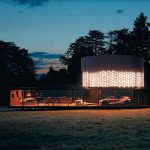
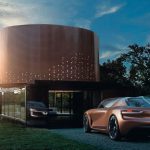
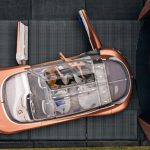
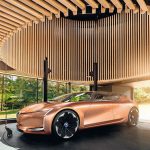
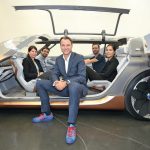
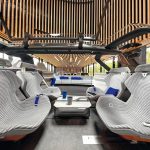
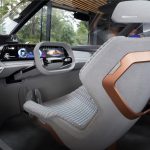
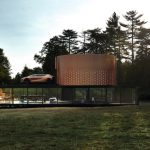
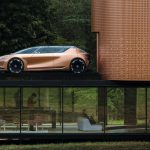
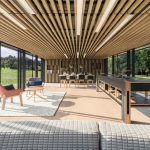
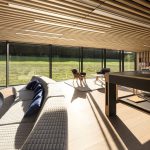
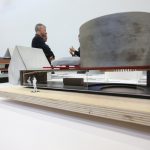
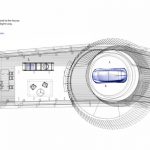

 Smarte Strategien
Smarte Strategien